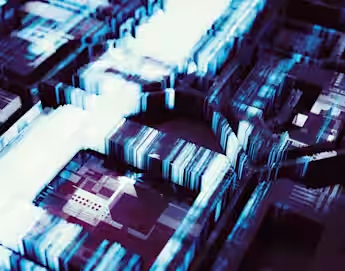Locations
Liability and AI
"Who is responsible if a driverless car hits a pedestrian?", "Who can I blame if my smart fridge sets on fire due a problem with its operating software?"
When we think of AI and autonomous vehicles operating in public spaces, the same question always arises: Who is liable or at fault for any damage or harm cause? Should it be the owner, the operator of the AI, the developer, the manufacturer or the retailer?
Spoiler alert
STRICT LIABILITY for the person "in control" of the AI
Well that's the suggested solution according to a recently published report on the 'Liability for Artificial Intelligence and other emerging digital technologies' produced by the European Commission's Expert Group on Liability and New Technologies – New Technologies Formation.
Ok – so it may not be as straightforward and simple as that and such solution would only apply to "permissible AI that nevertheless carries an increased risk of harm to others" such as AI-driven robots. Along with its view of the suitability (or not) of the various other options to solve this complex issue, the report makes several findings around this concept of strict liability:
The Report itself is over 60 pages, and has a whole section on keys findings which you find here
Please note however, that the report does not provide recommendations as to how these findings should be implemented into EU/national law. We've listed below those which the report identifies as the most important ones:
When we think of AI and autonomous vehicles operating in public spaces, the same question always arises: Who is liable or at fault for any damage or harm cause? Should it be the owner, the operator of the AI, the developer, the manufacturer or the retailer?
Spoiler alert
STRICT LIABILITY for the person "in control" of the AI
Well that's the suggested solution according to a recently published report on the 'Liability for Artificial Intelligence and other emerging digital technologies' produced by the European Commission's Expert Group on Liability and New Technologies – New Technologies Formation.
Ok – so it may not be as straightforward and simple as that and such solution would only apply to "permissible AI that nevertheless carries an increased risk of harm to others" such as AI-driven robots. Along with its view of the suitability (or not) of the various other options to solve this complex issue, the report makes several findings around this concept of strict liability:
- The person operating the AI (i.e. the driverless car) in a public space should be subject to the rules of strict liability for any damage.
- Strict liability lies with the person "in control of the risk" and the person who "benefits". If these are two or more people, strict liability should like with the one who has more control over the risks.
- The existing defences and exceptions need to be revisited for AI and emerging technologies.
- Producers should be strictly liable for defects (even if these appear after the products are in circulation.
The Report itself is over 60 pages, and has a whole section on keys findings which you find here
Please note however, that the report does not provide recommendations as to how these findings should be implemented into EU/national law. We've listed below those which the report identifies as the most important ones:
- In situations where a service provider ensuring the necessary technical framework has a higher degree of control than the owner or user of an actual product or service equipped with AI, this should be taken into account in determining who primarily operates the technology.
- A person using a technology that does not pose an increased risk of harm to others should still be required to abide by duties to properly select, operate, monitor and maintain the technology in use and – failing that – should be liable for breach of such duties if at fault.
- A person using a technology which has a certain degree of autonomy should not be less accountable for ensuing harm than if said harm had been caused by a human auxiliary.
- Manufacturers of products or digital content incorporating emerging digital technology should be liable for damage caused by defects in their products, even if the defect was caused by changes made to the product under the producer’s control after it had been placed on the market.
- For situations exposing third parties to an increased risk of harm, compulsory liability insurance could give victims better access to compensation and protect potential tortfeasors against the risk of liability.
- Where a particular technology increases the difficulties of proving the existence of an element of liability beyond what can be reasonably expected, victims should be entitled to facilitation of proof.
- Emerging digital technologies should come with logging features, where appropriate in the circumstances, and failure to log, or to provide reasonable access to logged data, should result in a reversal of the burden of proof in order not be to the detriment of the victim.
- The destruction of the victim’s data should be regarded as damage, compensable under specific conditions.
- It is not necessary to give devices or autonomous systems a legal personality, as the harm these may cause can and should be attributable to existing persons or bodies.

